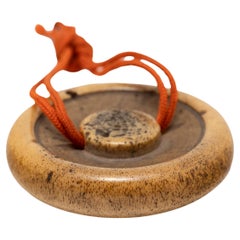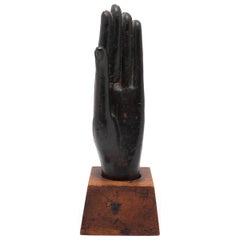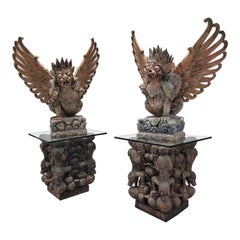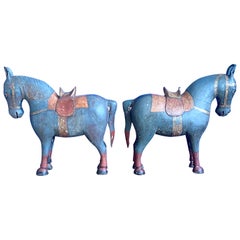Mid-19th Century Sculptures and Carvings
Japanese Edo Antique Mid-19th Century Sculptures and Carvings
Bronze
Japanese Meiji Antique Mid-19th Century Sculptures and Carvings
Bone
Thai Minimalist Antique Mid-19th Century Sculptures and Carvings
Bronze
Balinese Rustic Antique Mid-19th Century Sculptures and Carvings
Glass, Wood, Paint
Chinese Tang Antique Mid-19th Century Sculptures and Carvings
Wood
Japanese Antique Mid-19th Century Sculptures and Carvings
Boxwood
Chinese Qing Antique Mid-19th Century Sculptures and Carvings
Jade
Japanese Japonisme Antique Mid-19th Century Sculptures and Carvings
Bronze
Indian Anglo Raj Antique Mid-19th Century Sculptures and Carvings
Wood
Indian Expressionist Antique Mid-19th Century Sculptures and Carvings
Bronze, Copper
Chinese Qing Antique Mid-19th Century Sculptures and Carvings
Limestone
Japanese Edo Antique Mid-19th Century Sculptures and Carvings
Textile, Wood, Lacquer, Paper
Indian Antique Mid-19th Century Sculptures and Carvings
Wood, Giltwood
Chinese Qing Antique Mid-19th Century Sculptures and Carvings
Wood
Antique Mid-19th Century Sculptures and Carvings
Stone, Limestone, Steel
Chinese Antique Mid-19th Century Sculptures and Carvings
Jade
Chinese Qing Antique Mid-19th Century Sculptures and Carvings
Elm
Burmese Other Antique Mid-19th Century Sculptures and Carvings
Bronze
Chinese Qing Antique Mid-19th Century Sculptures and Carvings
Limestone
French Romantic Antique Mid-19th Century Sculptures and Carvings
Bronze
Chinese Chinese Export Antique Mid-19th Century Sculptures and Carvings
Giltwood
Japanese Edo Antique Mid-19th Century Sculptures and Carvings
Wood
Folk Art Antique Mid-19th Century Sculptures and Carvings
Teak
Thai Other Antique Mid-19th Century Sculptures and Carvings
Wood
Japanese Edo Antique Mid-19th Century Sculptures and Carvings
Wood, Boxwood
Asian Antique Mid-19th Century Sculptures and Carvings
Wood
Burmese Folk Art Antique Mid-19th Century Sculptures and Carvings
Teak
Japanese Edo Antique Mid-19th Century Sculptures and Carvings
Wood
Chinese Rustic Antique Mid-19th Century Sculptures and Carvings
Elm
Burmese Other Antique Mid-19th Century Sculptures and Carvings
Wood
Chinese Archaistic Antique Mid-19th Century Sculptures and Carvings
Bronze
Japanese Antique Mid-19th Century Sculptures and Carvings
Terracotta
Chinese Chinese Export Antique Mid-19th Century Sculptures and Carvings
Hardwood
Burmese Antique Mid-19th Century Sculptures and Carvings
Wood
Sri Lankan Antique Mid-19th Century Sculptures and Carvings
Bronze
Thai Antique Mid-19th Century Sculptures and Carvings
Bronze
Chinese Qing Antique Mid-19th Century Sculptures and Carvings
Limestone
Chinese Antique Mid-19th Century Sculptures and Carvings
Wood
Antique Mid-19th Century Sculptures and Carvings
Bronze
Japanese Edo Antique Mid-19th Century Sculptures and Carvings
Wood
Chinese Qing Antique Mid-19th Century Sculptures and Carvings
Wood, Paint
Indian Antique Mid-19th Century Sculptures and Carvings
Teak, Lacquer
Japanese Meiji Antique Mid-19th Century Sculptures and Carvings
Porcelain
Chinese Qing Antique Mid-19th Century Sculptures and Carvings
Limestone
Chinese Antique Mid-19th Century Sculptures and Carvings
Elm
Thai Minimalist Antique Mid-19th Century Sculptures and Carvings
Bronze
Chinese Chinese Export Antique Mid-19th Century Sculptures and Carvings
Coral
Japanese Edo Antique Mid-19th Century Sculptures and Carvings
Wood, Lacquer
Thai Antique Mid-19th Century Sculptures and Carvings
Bronze
Chinese Qing Antique Mid-19th Century Sculptures and Carvings
Limestone
Japanese Edo Antique Mid-19th Century Sculptures and Carvings
Shell, Wood
Southeast Asian Antique Mid-19th Century Sculptures and Carvings
Wood
International Style Antique Mid-19th Century Sculptures and Carvings
Giltwood
Chinese Qing Antique Mid-19th Century Sculptures and Carvings
Wood
Thai Antique Mid-19th Century Sculptures and Carvings
Bronze
Burmese Other Antique Mid-19th Century Sculptures and Carvings
Marble
Chinese Qing Antique Mid-19th Century Sculptures and Carvings
Elm
Chinese Qing Antique Mid-19th Century Sculptures and Carvings
Wood
Read More
12 Calming Spaces Inspired by Japanese Design
From cherry-blossom-adorned walls paired with glamorous lighting to wood-paneled ceilings above checkerboard-patterned chairs, these 12 spaces seamlessly blend Eastern and Western aesthetics.
Rodrigo Rivero Lake’s Mexico City Showroom Is a Museum-Worthy Trove of Spanish Colonial and Asian Antiques
The dealer and curator has spent the past 50 years amassing a collection of exceptional art, furniture and architectural elements that trace the cultural influence of the Spanish empire from Europe to the Americas and beyond.




